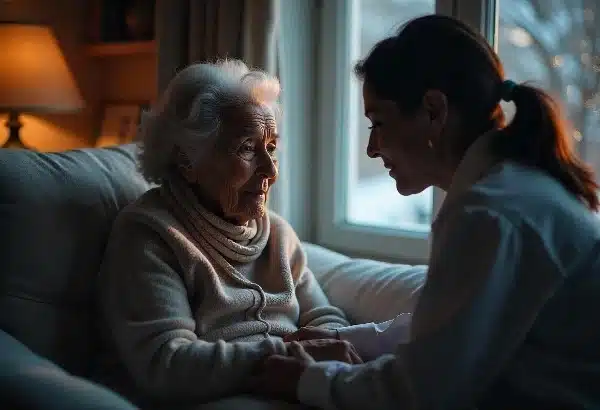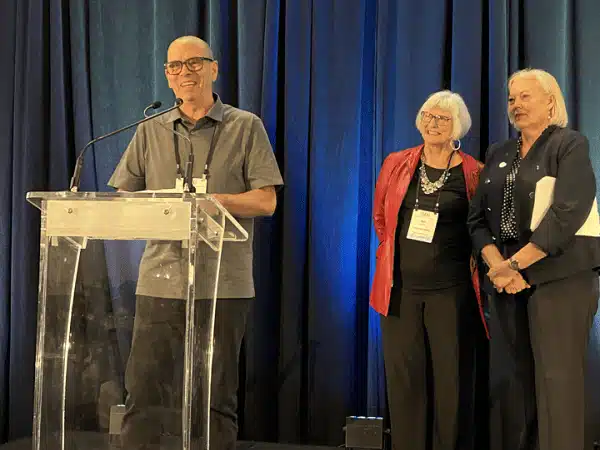Written by Ann-Marie Gilbert, MSc
I fully and wholeheartedly support September 30th – Orange Shirt Day – as the national day dedicated to truth and reconciliation in Canada. It’s an invitation and opportunity for every Canadian to publicly acknowledge and honour the thousands of Indigenous children who were forcibly removed from their families and communities and placed in residential schools. It’s also a day to remember the many children who never returned home. The day serves as a reminder of the importance of recognizing the inherent value and worth of every child, regardless of their cultural background.
One of the most visible ways to show support for Orange Shirt Day is by wearing an Indigenous-made orange shirt.
Orange Shirt Day is an excellent event and is working wonders to raise awareness. One of the most visible and easiest ways to show support for Orange Shirt Day is by wearing an Indigenous-made orange shirt. But the truth is that I struggle with Orange Shirt Day. I know you may disagree with me, but please, bear with me and read on.
I don’t want you to get the wrong idea – I am happy for an easy solution if the easy solution gets results. In this case, the easy solution is to buy and wear an Orange Shirt once a year to show support for Indigenous Truth and Reconciliation in Canada. But what I see and hear about reconciliation is that change is slow. Glacier-like slow.
The reason I struggle is because wearing an orange shirt is beginning to feel a lot like “sending thoughts and prayers” during a major event; it’s the North American solution for guilt. At the end of the day, I can take off the Orange Shirt and put it away until next year. However, residential school survivors do not have that luxury. They live with their experiences and the impact residential schools have had on their families every day of their lives.
While I can take my Orange Shirt off at the end of the day,
residential school survivors live with their experiences every day.
There needs to be action beyond the symbolic act of pulling out and wearing our Orange Shirts once a year. Actions that every person can undertake, either individually, or in their family, community, or business throughout the entire year. We know from personal experience that changing even the smallest habit requires focused and consistent effort over time. Changing Canadian behaviours, beliefs and actions will take more than a once-a-year event.
To provide a few options of how we can make a lasting change, I began thinking and came up with some ideas – “What if’s” – to find solutions for my discontent with the singularity of Orange Shirt Day. Here’s my ideas. Do any of these resonate with you?
‘What-if’ Ideas
What if people wore their Orange Shirts more than once a year? I know that some people do. What if more people did? And each time they wore them, they reflected on what it means to wear an Orange Shirt. Raising awareness year-round will be more effective when seeking to change beliefs and behaviours related to racism and bias. To me, this is an easy action.
What if people owned more than one Indigenous-made orange shirt, and in doing so, helped to support Indigenous businesses instead of supporting fast fashion? Decreasing landfill donations while supporting local Indigenous businesses sounds like a positive way forward!
What if businesses hosted a few Orange Shirt Fridays throughout the year? At these events, funds could be collected and donated to a local Indigenous community or to TRC?
What if all people actively learned about the ongoing effects of colonialism? Yes – that says ongoing because the effects of colonialism continue. For example, are you aware of the effects of colonialism and the significant injustices in healthcare? Did you know that historical and current mistreatment, racism, and systemic bias prevent Indigenous people from accessing or seeking appropriate health care?
The Calls to Action in Healthcare from the TRC Report, Action 23.iii identifies that all healthcare providers should be educated on how to provide for cultural safety and proceed with a trauma-informed approach when supporting any Indigenous person.
Truth and Reconciliation Commission Call to Action 23.iii
We call upon all levels of government to provide cultural competency training for all healthcare professionals.
What if every person in healthcare began this free course[1] offered at PACE for PSWs, titled “Providing Culturally Safe Care with an Indigenous Lens.” (or a course with similar content)? The course takes between 2-3 hours to finish, and although written for PSWs, the course content is applicable to any person whether working in healthcare (e.g., nurses, social workers, clergy, volunteers), or from other walks of life. Learning the skills taught in this course could dramatically change the way people interact with Indigenous people as well as people from other cultures.
What if wearing the newly released Orange shirt from Indigenous designers became as popular as wearing your [Insert fav sports team] shirt with its logo? There are so many talented Indigenous designers across the country who produce their own versions of the Orange Shirt. Collecting and wearing the different designer’s shirts would raise awareness of their work and of support for TRC, with the added benefit of boosting the Indigenous economy.
These are my ideas; however, I am certain there are many more ways to make reconciliation part of our lives throughout the year. We invite you to share your ideas in the comments below.
Searching for an Indigenous-made Orange shirt?
Check the links below.
If we have missed your favourite Indigenous-made Orange Shirt shop, please share it in the comments!
Victoria, B.C. Victoria Orange Shirt Day (Victoria)
William’s Lake, B.C. Orange Shirt Society
Saskatoon, Saskatchewan Wanuskewin Gift Shop
Winnipeg, Manitoba Red Rebel Armour
Winnipeg, Manitoba Sunshine House
Toronto, Ontario Turtle Lodge Trading Post
Toronto, Ontario Resist Clothing
Halifax, N.S. Indigenous Treaty Partners








